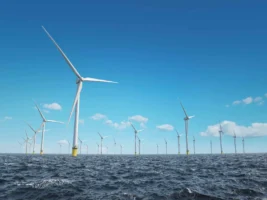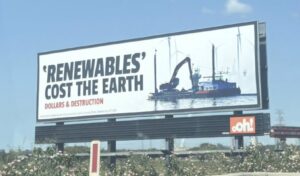I have two passports; one is red and one is blue. The red one is a British passport. I was born in London and I got my passport before Britain brexited the European Union. The blue one is my Australian passport (pretty damn useless, at the moment).
Yesterday, Sky News UK (not to be confused with the climate-denying Murdoch-owned Sky News Australia) leaked a very important emails that involves both countries being profoundly unimpressive.
They revealed that UK minister had bowed to pressure from Australia to drop a specific reference to the temperature targets of the Paris Climate agreement from the text of a free trade deal develop between the UK and Australia. “Sky News understands the treaty text will contain a reference to Paris, but the reference to specific temperature commitments is disappearing”
NEW
So the UK & Australian governments play down the impact of the decision to drop binding temperature agreements from the trade deal
But WATCH: here is the Australian Queensland Senator and ex resources minister telling me why Australian has doubts over Paris pic.twitter.com/itVtRVUtCd
— Sam Coates Sky (@SamCoatesSky) September 8, 2021
It’s worth explaining precisely why this is important. The mere act of signing onto the Paris Climate agreement does not in and of itself compel a country to actually reduce its emissions. The document was designed as a key starting block to kick off the process of ‘ratcheting’ climate action in 2015. Australia, of course, signed on but stayed exactly where it started. The 26th Conference of Parties (COP26) meeting due in Glasgow this year is meant as something of a five-year (six, thanks to COVID19) stocktake of progress, including a call for signatories to ‘ratchet’ their climate commitments upwards.
The text of the Paris agreement itself is pretty vague. In its final form, it calls for the world to “achieve a balance between anthropogenic emissions by sources and removals by sinks of greenhouse gases in the second half of this century, on the basis of equity, and in the context of sustainable development and efforts to eradicate poverty”. As I wrote last year, that’s open to some very bad-faith interpretations, such as ‘net zero by 2100’. Trace Australia’s 2015-era Paris targets, of 26-28% by 2030 out to their logical zero point, and it’s right on 2100.
Confirming what has long been understood; Australia is a 'signatory' to the Paris Agreement, but the Morrison government is expending its diplomatic capital to avoid the outcomes the Paris Agreement is meant to achieve.https://t.co/GkP4VEw9O5
— Michael Mazengarb (@MichaelM_ACT) September 8, 2021
That is to say – Australia has taken the worst possible interpretation of the Paris Agreement, and is not in a particularly friendly mood towards any attempts to make that interpretation less harmful.
Why temperature targets are loathed
One important statement in the recent IPCC report was the reiteration of the nearly linear relationship between adding greenhouse gases into the atmosphere and the warming of Earth. That means the addition of specific temperature targets into the free trade agreement creates an implicit budget for the release of greenhouse gases, and if that temperature target is low, it means Australia’s government has to implement policies to reduce emissions faster than they would fall if nothing was done.
This analysis has already been done in many different ways, for Australia. For the country to align with a global temperature limit of 1.5C, it needs to roughly double the planned emissions reductions between now and 2030, and reach ‘net zero’ emissions by at least 2050, but ideally much sooner (2040 or earlier).
There are a few simple reasons Australia is projected to badly over-emit over the coming years. Coal-fired power faces the threat of renewables, but nowhere near fast enough to align with a 2030 coal phase-out, as required for a 1.5C budget. Australia’s coal and gas mining projects are expanding rapidly, not only supplying fossil fuels that are burned eventually, but also creating their own massive emissions, in particular the fugitive methane released during the process. That’s thanks to an unending stream of massive subsidies from the government. Australia’s massive fleet of cars will barely change over the next decade, but the sale of the combustion engine needs to stop within nine years for any chance of 1.5C to remain.
These are all policy actions and conscious decisions, either to fail to act where it’s needed or, in most cases, to actually actively try and make the problem worse.
This is a very nice fundamental illustration of Australia’s consistent position on climate change throughout the decades, mostly from conservative governments. Create the illusion of action by signing up to the bare minimum, but spend all real efforts stifling anything that might actually threaten to create real climate action. Of course, the consequence isn’t just that Australia’s emissions continue to rise. This diplomatic position of extreme selfishness and an almost religious fervour in protecting the country’s fossil fuel industries from any threat has flow-on impacts for other countries caught up in the sheer silliness of it all.
This is bad for the UK, too
It’s extremely embarrassing moment for the United Kingdom, and for Boris Johnson. The government is certainly miles ahead of Australia in terms of climate action. They’ve set short-term, interim climate targets that are aligned with net zero by 2050, they’ve implemented several important policies such as for offshore wind and electric vehicles, and they take their climate advice from an independent advisory body.
This is all very good, but their policies also fall noticeably short of where they need to be to achieve those climate goals, and there isn’t any clear sign that’ll improve before COP26.
https://twitter.com/KetanJ0/status/1384787289918824456
All eyes are on the UK government now for signs of dishonesty and back-flipping, and allowing this concession to Australia seems to confirm the skepticism that many have had on the Johnson government’s true intentions. While they’re comfortable creating technology and business focused climate policies, the hard stuff like change in diets, aviation and in mining projects like the Cumbria coal mine or offshore oil and gas extraction really doesn’t seem to be well addressed.
It’s a key moment of failure brought on by the clumsy, wrecking habits that Australia is well known for, in terms of global climate policy.
Net zero: But when?
When the Australia-UK trade deal was announced, Johnson accidentally implied that Australia has a net zero by 2050 target, and an Australian journalist had to helpfully interject to clarify that it was a “preferable” one. By the time COP26 rolls around, Australia will probably declare a ‘net zero by 2050’ target, but it’s safe to predict it’ll come packaged with loopholes that achieve the prime directive: no impact on the fossil fuel industry’s revenue streams.
Will Australia always find a target for its climate stalling as bumbling and clumsy as Boris Johnson? Maybe not.
“The former EU Trade Commissioner, Cecilia Malmstrom confirmed it was a red line for the EU that it must have a legally binding reference to the commitments made in the Paris agreement in their FTA with Australia. That is probably why there are have been 11 rounds of negotiations and no agreement on the climate language to date because the EU has stood its ground”, said The Australia Institute’s Richie Merzian, in response to the news about the UK / Aus trade deal.
When the climate reality finally overtakes Australia’s incredible capacity for global climate wrecking, it’s going to come as a raw shock to a government that’s very good at escaping reality.












